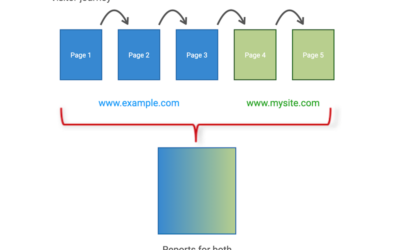As you may know, I occasionally write articles elsewhere (journalism.co.uk, eConsultancy, DaveChaffey.com). In case you miss these, and because I like to keep my thoughts in one place I also reproduce here a little later. The following is from my September post at eConsultancy.
Key Performance Indicators (KPIs) are important to drive improvement for your website. Although it is obviously interesting and insightful to compare how your website is performing against your peers and competitors, it can be a mistake to place too much emphasis on external industry benchmarks.
These external benchmarks can be misleading and often end up with you finding the benchmark that fits your story, giving a false impression of success. KPIs vary greatly by business sector, and even within subsectors there is wide variance: think “flights” versus “holidays” or “food retail” versus “clothing retail”. Even comparing against your competitors with identically defined goals is fraught with gross approximations. The exact path that visitors will take to complete a goal and the quality of their user experience along the way will vary for every website.
Slight changes in these can have a major impact on conversion rates. I deliberately emphasize the phrase identically defined goals here, as definitions from different organizations can become blurred. For example, retail managers will often wish to differentiate existing customer visits from non-customer visits. Quoting a standard conversion rate across an industry can therefore be misleading.
Also, consider that e-commerce conversion rates can be measured in a variety of ways:
- The number of conversions / total number of visits to the website
- The number of conversions / total number of visitors to the website
- The number of conversions / total number of visits that add to cart
- The number of conversions / total number of visitors that add to cart
In the preceding list you can also substitute the word ‘transactions’ for ‘conversions.’ That is, a visitor may complete a purchase and enjoy the experience so much that they return to make an additional purchase within the same visit session. Depending on the web analytics tool used and the preference of the organization, that can be defined as one conversion with two transactions, or two conversions with two transactions.
Note, if you are a Google Analytics user, your reports would show one conversion and two transactions, as the visitor has converted to a customer and this can happen only once during their session.
Other onsite factors that can greatly affect conversion rates, and therefore muddy the waters for benchmarking, include the following:
- Your website’s search engine visibility (organic and paid search listings)
- You website’s usability and accessibility (is your site easy to navigate?)
- Whether a purchase requires registration up front—its exasperating to see how many sites require this. Put it at the end of the transaction
- process.
- Your page response and download times—page bloat is a conversion killer.
- Page content quality and imagery—it goes without saying that these should be a professional standard.
- The use of trust factors such as safe shopping logos, a privacy policy, a warranty, use of encryption for payment pages, client testimonials, etc.
- The existence of broken links or broken images—these destroy the user experience.
- Quick and accurate onsite product searching
- Whether your website works in all major browsers
As you can see, comparing apples with apples is complicated. By all means benchmark yourself against your peers. It can be an interesting and energizing comparison. However, I emphasize the need for internal benchmarking as the main drivers for your website’s success.
As always, your feedback is much appreciated and always responded to. Even if you have nothing to add, please take a second (yes one second!) to rate this post by clicking on the starts.



Great article. This will help me in explaining to my powers at be that the web has not been McDonalized quite yet…and hopefully never will be so to come up with an apples to apples comparison of our hospital website is impossible. Too many variables. I keep emphasizing we need to focus on identifying our own goals, KPIs, and conversions and stop worrying if someone else has more visitors than us…which of course doesn’t mean they are more successful than us! Probably a good thing GA dropped the benchmarking feature. Again, great article. I’m rather new to GA but have learned a great deal from you and consider your book the GA bible so to speak.
Brain, i bought your book year ago and it’s like dictionary for me. I back to it every time i need new idea or analytics help.
Vidall: Thanks for the feedback – look out for the second edition – coming soon.
Your blog is one of the most wonderful places to visit, good article man.
affordable seo
I agree with the point that if you are a Google Analytics user, your reports would show one conversion and two transactions, as the visitor has converted to a customer and this can happen only once during their session.Benchmarking sites are more useful and come on high page-ranking.But due to several reasons, there is problem in traffic hit ratio which results in less outcomes compare to the previous year’s ratio and index.I want to know the main cause of root of the lower down ratio.
I agree with this point that Benchmarking site performance can be misleading. I think we should interesting and insightful to compare how your website is performing against your peers and competitors.